Katowice- Silesian 作者: 来源: 发布时间:2021-03-09
Ⅰ. Population and Area
Population (31 December 2019)
• City 292,774 Decrease (11th)[1]
• Urban 2,710,397
Area
• City 164.67 km2 (63.58 sq mi)
Website www.katowice.eu
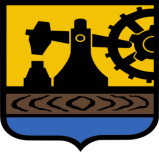
Ⅱ.Natural Geography (environment and resources)
- Katowice is a city in Upper Silesia in southern Poland, on the Kłodnica and Rawa rivers (tributaries of the Oder and the Vistula respectively). It is in the Silesian Highlands, about 50 km (31 mi) north of the Silesian Beskids (part of the Carpathian Mountains) and about 100 km (62 mi) southeast of the Sudetes Mountains. Katowice is in the Katowice Highlands, part of the Silesian Highlands, in the eastern part of Upper Silesia, in the central portion of the Upper Silesian Coal Basin. Katowice is an urban community in the Silesian Voivodeship in south-west Poland. It is central district of the Silesian Metropolis—a metropolis with a population of two million. It borders the cities of Chorzów, Siemianowice Śląskie, Sosnowiec, Mysłowice, Lędziny, Tychy, Mikołów, Ruda Śląska and Czeladź. It lies between the Vistula and Oder rivers. Several rivers flow through the city, the major two being the Kłodnica and Rawa. Within 600 km (370 mi) of Katowice are the capital cities of six countries: Berlin, Vienna, Prague, Bratislava, Budapest and Warsaw.
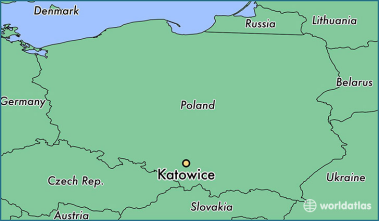
- Transport
- Public transport
- Tram in Katowice
- Veturilo bicycles on Mariacka Street
- The public transportation system of the Katowice and Upper Silesian Metropolis consists of four branches—buses, trams and Trolleybuses united in Zarząd Transportu Metropolitalnego (lit. Metropolitan Transport Authority) as well as the regional rail (primarily Koleje Śląskie and Przewozy Regionalne). Additional services are operated by private companies and state-owned railways.
- Trams
- Silesian Interurbans – one of the largest tram systems in the world, in existence since 1894. It spreads for more than 50 kilometres (31 miles) (east-west) and covers 14 districts of the Upper Silesian Metropolis.
- Roads
- National road 79 in Katowice
- European route E40 (France–Belgium–Germany–Poland–Ukraine–Russia–Uzbekistan–Kazakhstan)
- European route E75 (Vardø, Norway–Finland–Poland–Slovakia–Hungary–Serbia–Macedonia–Greece)
- European route E462 (Czech Republic–Poland)
- Motorway A4 (German/Polish border – Wrocław – Katowice – Kraków – Rzeszów – Polish/Ukrainian border)
- National road 79
- National road 81
- National road 86
- Several important roads in neighbourhoods of Katowice (USMU):
- Motorway A1 (Gdańsk – Toruń – Łódź – Gliwice – Polish/Czech border)
- Expressway S1
- National road 11
- National road 44
- National road 78
- National road 88
- Katowice International Airport
- National road 94
- Airports
- The city and the area are served by the Katowice International Airport, about 30 km (19 mi) from the city center. With 3 terminals and over 4,8 million passengers served in 2018, it is by far the biggest airport in Silesia.
- Because of the long distance to the airport, there is a proposal to convert the much closer sport aviation Katowice-Muchowiec Airport into a city airport for smaller, business-oriented traffic.
- Katowice Central Station
- Railways
- Upper Silesian Railway reached the area in 1846. Katowice Central Station is one of the main railway nodes and exchange points in Poland. It has replaced the old Katowice historic train station. The city has direct connections among others with Warsaw, Cracow, Szczecin and Gdynia.
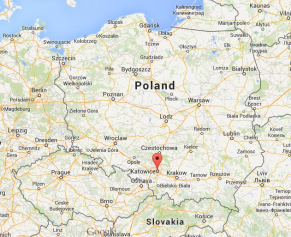
Ⅲ.Economy
- Katowice is a center of science, culture, industry, business, trade, and transportation in Upper Silesia and southern Poland, and the main city in the Upper Silesian Industrial Region. Katowice lies within an urban zone, with a population of 2,746,460 according to Eurostat, and also part of the wider Silesian metropolitan area, with a population of 5,294,000 according to the European Spatial Planning Observation Network. Today, Katowice is a rapidly growing city and emerging metropolis. It is the 16th most economically powerful city by GDP in the European Union with an output amounting to $114.5 billion.
- Katowice - Infogalactic: the planetary knowledge core https://infogalactic.com/info/Katowice
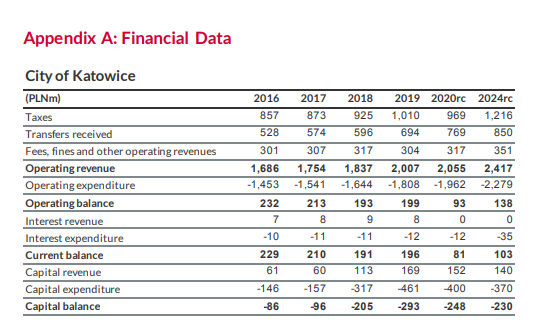
- In recent years Katowice has undergone a huge transformation. Not so long ago, the city stereotyped by many as a symbol of Silesia: the place of heavy industry, coal and steel. The road that Katowice has travelled, becoming the modern capital of a metropolitan area with 2 million inhabitants, is also an example of the transformation that has taken place throughout Poland.
- WELCOME | KATOWICE http://welcome.katowice.eu/
- KATOWICE_komunikat_opublikowany_angielski_2020-06-17.pdf
Ⅳ.Industrial Characteristics
- Katowice is a large coal and steel center. It has several coal mines (Wujek Coal Mine, Mysłowice-Wesoła Coal Mine, Wieczorek Coal Mine, Murcki Coal Mine, Staszic Coal Mine) organized into unions—Katowice Coal Holding company (pl: Katowicki Holding Węglowy), two steelworks (Huta Baildon, Huta Ferrum), and one foundry of non-ferrous metals (Huta Metali Nieżelaznych Szopienice).
- Katowice is a large business and trade fair center. Every year in Katowice International Fair and Spodek, tens of international trade fairs are organized. Katowice has the second largest business centre in Poland (after Warsaw Business Centre). Skyscrapers stand along Chorzowska, Korfantego and Roździeńskiego street in the centre. The newest office buildings (A-class) are the Chorzowska 50, Altus Skyscraper and Silesia Towers (under construction).
- Katowice is the seat of Katowice Special Economic Zone (Katowicka Specjalna Strefa Ekonomiczna).
- The Unemployment rate is one of the lowest in Poland, at 2% (2008). The city is still characterized by its working-class strength and attracts many people from neighbouring cities (other districts in USMU seeking jobs).
- Key Project
- 1. KATOWICE’S ECO-DISTRICT OF THE FUTURE
- A huge new eco-friendly multifunctional commercial and residential community is to be built on a former factory site in Poland’s industrial heartland of Silesia, an agglomeration which has been transformed in recent years.
- Katowice’s eco-district of the future | Mayors of Europe https://mayorsofeurope.eu/infrastructure/katowices-eco-district-of-the-future-2/
- 2. NEINVER lays foundation stone of its new project in Katowice
- Galeria Katowicka represents the company’s largest investment in Europe and one of the most prestigious development projects in Poland
- The 200,000 m2 complex includes a new train station, an underground bus station, a shopping arcade, an office building and infrastructure upgrades
- NEINVER lays foundation stone of its new project in Katowice | NEINVER https://www.neinver.com/en/article/neinver-lays-foundation-stone-its-new-project-katowice
- 3. Echo Investment launches new project in Katowice
- Echo Investment has obtained a building permit for the construction of Galeria Libero, which is to be built on Kościuszki Street in the southern part of Katowice. The investor also concluded a contract with the city authorities concerning the road layout around the facility.
- Echo Investment launches new project in Katowice | Property Forum https://www.property-forum.eu/news/echo-investment-launches-new-project-in-katowice/143
Ⅴ.Attrations and Cityscape
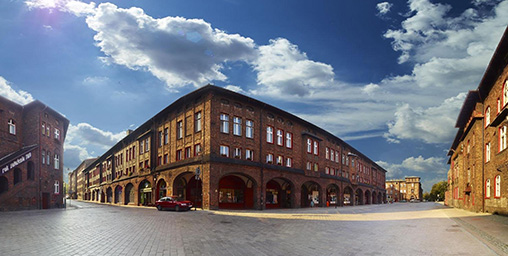
Neo-Renaissance Monopol Hotel opened in 1902
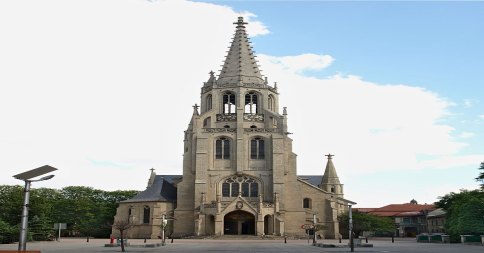
Neo-Gothic St. Mary's Church from the 19th century
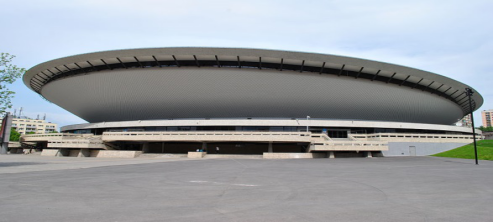
Spodek
Katowice did not originate as a medieval town. The city centre was beginning to form in the mid-19th century when it was part of the Kingdom of Prussia and had an ethnic German majority. The buildings of the time are decorated in an eclectic style (mostly Renaissance with elements of Baroque) and elements of Art Nouveau style (Polish: secesja). By the end of the nineteenth century the centre was being referred to as a "little Paris" due to the presence of Parisian-styled tenement houses. Examples of Modernism, especially International Style and Bauhaus inspired architecture, still coexist with modern office buildings in central Katowice. Between the 1950s and 1980s many socialist apartment blocks were constructed around the inner suburbs. Notable examples from that period include a multipurpose arena complex called Spodek and parts of Koszutka district.
Katowice is one of the few cities in Poland where nearly all architectural styles are present. For instance, the Market square in Katowice (Polish: Rynek Katowicki) is surrounded by a vast majority of buildings and edifices representing styles such as neoclassicism, modernism, socialist realism and contemporary-modern. Some tenements have neogothic elements, which are an outstanding example of this type in Central and Eastern Europe. The street outlines, especially within the older inner districts, closely resemble the ones in Paris. Representational boulevards and promenades were established despite the city's strong industrial character. These, however, mostly adorned the city center and not working-class outer suburbs.
Unfortunately many old majestic buildings were demolished in the 1950s to make space for monumental modern blocks. Among other reasons for their destruction was the immense architectural detail which once represented the wealth of local industrialists and property owners. This particularly didn't fit in with the Socialist-Communist authority at the time.
Today, the marketplace and several nearby streets with shopping promenades are closed to traffic.
Tourist attractions
Market square and adjacent streets: Warszawska, Teatralna, Dyrekcyjna, Staromiejska, Dworcowa, św. Jana, Pocztowa, Wawelska, 3 Maja, Stawowa, Mielęckiego, Starowiejska and Mickiewicza, the so-called "Great Market Square of Katowice" or "Old town of Katowice"—many historic (monument) buildings. This is a group of functional-architectural. On the market square and most of the above-mentioned streets are prohibitions or restrictions on cars. Streets: Staromiejska, Dyrekcyjna, Wawelska, Stawowa and Warszawska is lined decorative cobblestone creating a pedestrian zone. The authority plans to Katowice—Quarter streets: św. Jana, Dworcowa, Mariacka, Mielęckiego, Stanisława and Starowiejska is to become so "small market square".Nikiszowiec – historical settlement of Katowice, candidate to UNESCO
Cathedral of Christ the King
St Mary's Church
Church of the Resurrection, Evangelical-Augsburg, built in 1856–1858
Church of St Michael Archangel, the oldest church in the city, built in 1510
Drapacz Chmur, one of the first skyscrapers in Europe
Silesian Parliament, built in 1925–1929. For a very long time, it was the biggest structure in Poland
Modernist old town
Ⅵ.History and Culture
istory – part one
- The history of Katowice is a mirror reflexion of the history of the Upper Silesia. In the past these lands belonged to Poland, the Czech state (Czechia), Austria, Prussia and Germany. After Poland had regained its independence in 1918, the region's future was influenced by three Silesian Uprisings and the plebiscite (1919-1921). The city's great development in the twenties and the thirties of 20th century was discontinued by the outbreak of the World War II. After the war, the whole region of the Upper Silesia became a part of Poland. Modern history of Katowice has been marked, among others, with the tragedy in the "Wujek" Coal Mine (1981), the pilgrimage of the Pope John Paul II (1983) and prizes granted by the Council of Europe between 1998 and 2008.
- Villages and hamlets
- Some of the cities and towns of the Upper Silesia have a very short history (19th and 20th century). Their creation was connected to the development of mining, metallurgy and heavy industry. It was then that the nearby villages and production hamlets were joined into homogenous urban organism. This is the beginning of cities like: Zabrze, Ruda Śląska and Katowice. Before 1859, the former Katowice village had had 3 thousand inhabitants and its last village leader was Kazimierz Skiba.
- Kat or Kąty
- The origins of the name of the city still remain an uncertain matter. Some historians claim that it originated from the word "kat" (torturer) which was a nickname of the first local settler. Then, others connect the name with the word "kąty". In the past, settlers' huts were called like this. The settlers dealt with clearing the forests and delivering wood to Kuźnica Bogucka.
- Villa nova Katowicze
- Villa nova Katowicze was first mentioned in 1598. The village was established by the Bogucki family, the owners of the oldest forges of the region. However, nowadays there are some districts of the city with even longer history than this one, including, e.g. Dąb (1299), Bogucice (1360), Roździeń (1360), and Załęże (1360). Some of them were famous for precious metals output and their processing in the iron forges situated by the Rawa River. Other villages were agricultural.
- Founding fathers of Katowice
- When the city was ruled by Prussia (from 1742) the Upper Silesia and Katowice underwent an intense period of economic development. The idea to establish the city belonged to Franz Winckler, a mining entrepreneur, who in 1839 was the owner of the Katowice area. This task was performed by the administrator of the land, Friedrich Wilhelm Grundmann. Then, the spatial development plan of the area was created by an engineer, Heinrich Nottenbohm.
- From city to district
- The dynamic development of the city gave way to creation of many offices and institutions. Along with them also banks, schools and stores were opened. During the years of 1856-1859 at present Warszawska Street the Evangelical Church of Lord's Resurrection was built. The first efforts to get municipal rights were made in 1855, but the charter was finally granted in 1865. Eight years later Katowice became the capital of the district.
- Golden years
- At the end of the eighties in the 19th century there was a powerful mining and metallurgy concern "Kattowitzer Aktien-Gesellshaft" in Katowice. Also, Miners' Guild and Upper Silesian Coal Convention could be found here. In 1832 John Baildon, the pioneer of metallurgy in the Upper Silesia, built his steelworks in Załęże. The big public institutions included: District Court, The Management of the Prussian-Royal Railway and the National Post Management. At the beginning of the 20th century the city was enriched with the City Theatre, a new railway station, Neo-Gothic Church of Saints Peter and Paul, and many tenement houses in the city centre. During the years of 1914-1918 Katowice did not feel the disastrous influence of the I World War. War actions fortunately bypassed the city and the needs concerning armaments influenced the dynamic development of mining and metallurgy.
- Return to Poland
- One of the symbols of Katowice is the Monument of Silesian Insurgents situated at the General Jerzy Ziętek Roundabout. Its monumental wings symbolize the three uprisings (1919, 1920, 1921). During the last one more than 60 thousand of insurgents took part in the fight against Germans. Finally, as a result of international decisions, Poland annexed 29% of the plebiscite area, including Katowice. Polish troops entered the city on 20 June 1922.
- Capital of the voivodeship
- During the interwar period Katowice was one of the richest Polish cities. The city was the capital of the autonomous Silesian Voivodeship and the seat of the Silesian Parliament. Consulates of 12 countries were situated here, as well as many steelworks, mines, factories and banks.
- The investment boom included the housing industry, public buildings and churches. It was then that, among others, the Silesian Parliament and the Voivodeship Office buildings were constructed. In 1927 the city commenced building of the Christ the King's Cathedral and the Bishop Palace. In 1932 at Żwirki i Wigury Street a fourteen-storey skyscraper was erected. In Katowice the 73rd Infantry Regiment, being a part of the 23rd Upper Silesian Infantry Division, was stationed. In 1939 the city had 135 thousand inhabitants.
- September legend
- After the outbreak of II World War German troops attacking the Upper Silesia were confronted with fierce resistance of the soldiers from "Śląsk" Operation Group - "Kraków" Army. However, on the night from 2 to 3 September 1939 they were ordered to retreat behind the line of the Przemsza River. At that time Katowice was defended also by few groups of former Silesian Insurgents and scouts. Their fight at the parachute tower (Kościuszko's Park) and around the House of an Insurgent (Matejki Street) became legendary. While defending the city and during later executions a few hundred of Poles were killed. The 73rd Infantry Regiment will be remembered in the history of the September Campaign because of its soldiers taking part in the fights against the Germans on 21 September 1939 (e.g. Alwernia, Bełżec and Tomaszów Lubelski).
- Period of occupation
- During the years of German occupation the city was the seat of the Katowice Regierungsbezirk (beginning with 1940). Despite extremely difficult conditions, Katowice inspectorate of the Silesian District of the Home Army was operating here. One of its commanders was Colonel Zygmunt Walter-Janke. On 27 January 1945 troops of the Red Army entered the city. Soon, part of its citizens fell victim to repressions and transportation to camps into the depths of Russia.
- Heroic Sławik
- For a dozen post-war years the figure of the heroic Silesian – Henryk Sławik, was covered in a conspiracy of silence. This participant of Silesian Uprisings, a representative of the Silesian Seym and councillor of Katowice, in 1939 got to Hungary. From Hungary, as a delegate of the emigrational government of the Republic of Poland, he was organising transportation of Polish soldiers to the armed forces in the West. Moreover, thanks to forged documents he saved life of about 5 to 14 thousand Polish Jews who then escaped to Hungary. His activity was ended by being arrested by the Germans, and he died in the Mauthausen concentration camp (August 1944). At present, one of Katowice schools as well as the roundabout in Tysiąclecia Housing Estate are named after Henryk Sławik. On 25 February 2010 the President of the Republic of Poland – Lech Kaczyński, honoured him with the Order of White Eagle.
- Stalinogród
- In 1953, after the death of Józef Stalin, Katowice was named Stalinogród, and the name of the Katowice voivodeship was changed into the Stalinogród voivodeship. Former names were re-established in December 1956.
- The nine from "Wujek"
- The latest history of Katowice is connected with bloody events that took place after the Martial Law was introduced (13.12.1981). On 16 December 1981 just outside the walls of the "Wujek" Coal-Mine 9 miners from this mine were killed by the bullets shot by the police. Ten years after that the monument in their honour was unveiled in front of the mine (Wincentego Pola Street). The story of this tragedy is told in the movie entitled "Death Like a Slice of Bread" directed by Kazimierz Kutz (1994).
- The Pope at Muchowiec
- On 20 June 1983 John Paul II visited Katowice during his pilgrimage. The place he chose for the Marian prayer was the Muchowiec Airport. The Pope's altar was decorated with the painting of the Mother of God from Piekary Śląskie (a famous Silesian sanctuary). In his speech delivered to the 1,5 million congregation the Pope spoke about labour rights. This speech went down to history by the name of the Labour Gospel. Next, he visited the Katowice Christ the King's Cathedral. The guests gathered there listened to the first-night performance of "Victoria" by Wojciech Kilar, a work composed especially for the Pope. Nine years later Katowice became one of 14 capitals of the Catholic Church Archdioceses in Poland.
- European Katowice
- For the last several years Katowice has been one of the leader cities of the European integration. To acknowledge this credit the Council of Europe awarded the city with the Honour Flag of the Council of Europe (1998), the Council of Europe Plaque (2000) and the Europe Award (2008). Katowice has applied also for the title of the European Youth Capital 2015 and the UNESCO Creative City of Culture in 2015.
Ⅶ.Other Information
- Katowice is one of the few cities in Poland where nearly all architectural styles are present. For instance, the Market square in Katowice (Polish: Rynek Katowicki) is surrounded by a vast majority of buildings and edifices representing styles such as neoclassicism, modernism, socialist realism and contemporary-modern. Some tenements have neogothic elements, which are an outstanding example of this type in Central and Eastern Europe. The street outlines, especially within the older inner districts, closely resemble the ones in Paris. Representational boulevards and promenades were established despite the city's strong industrial character. These, however, mostly adorned the city center and not working-class outer suburbs.
- Unfortunately many old majestic buildings were demolished in the 1950s to make space for monumental modern blocks. Among other reasons for their destruction was the immense architectural detail which once represented the wealth of local industrialists and property owners. This particularly didn't fit in with the Socialist-Communist authority at the time.
Ⅷ.Contact Information
- Katowice City Hall
- Address: 40-098 Katowice,
- ul. Młyńska 4
- Tel.: +48 322593909
- Fax: +48 322537984
- E-mail: urzad_miasta@katowice.eu
- Mayor Marcin Krupa
